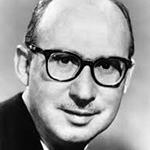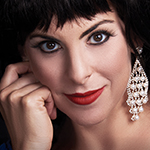Charles Busch
My Kinda 60s
Rockwell Table & Stage, Los Angeles, CA, March 12, 2018
Reviewed by Elliot Zwiebach for Cabaret Scenes
jpg” alt=”” width=”212″ height=”212″ /> Charles Busch
Charles Busch is absolutely enchanting. As a singer, he gets to the heart of every lyric. As a raconteur, he tells the best stories — and tells them well. As an entertainer, he owns the stage.
Busch is a magnificent actor, which makes him a lyricist’s dream — consistently finding the meaning in every word and communicating with an audience through vocal precision, emotional passion, and broad gestures, enabling a listener to hear old, familiar songs as if for the first time. In “Those Were the Days” (Gene Raskin/Boris Fomin), for example, he sang the verses in a soft, poignant way that added new layers of regret to contrast with the joy of the uplifting chorus.
In an evening devoted to songs of the 1960s, he placed “By the Time I Get to Phoenix” (Jimmy Webb) in the context of the sexual revolution just beginning at the time, delivering it in a gentle, very touching version from the perspective of a closeted gay man who’s leaving the wife he felt obligated to marry to live his own more authentic life.
Talking about the era’s anti-war movement, he was thoughtful and powerful on Joni Mitchell’s “Both Sides Now,” and he offered a gentle, delicate delivery of Paul McCartney’s “Here, There and Everywhere.” He won bravos from the audience on a pair of songs that he said echo the current era — a solid, dramatic “What Would You Do?” (Kander & Ebb, from Cabaret), and a heartfelt “There Won’t Be Trumpets” (Sondheim, from Anyone Can Whistle).
Busch was absolutely charming on a sweetly sung “Hurry! It’s Lovely Up Here” (Alan Jay Lerner/Burton Lane, from On a Clear Day You Can See Forever), and he added a melancholy tinge to “Happy Together” (Gary Bonner/Alan Gordon) in a terrific arrangement by his music director and pianist Tom Judson.
The 1960s were the decade in which Busch grew from six to 16, living with his Aunt Lillian, who he described as a sort of Auntie Mame, “though probably closer to David Copperfield’s Aunt Betsy Trotwood.” Most of his patter dealt with his interactions with her and her willingness and encouragement to allow him to develop and become himself. The way he told stories about her, it was likely most of his audience wished they could have had an Aunt Lillian of their own.
Busch told Cabaret Scenes this show represented the first time he has performed out of drag — in a teal blue suit, a black shirt, brocade low boots, and strands of beads and necklaces around his neck. Asked to describe his outfit following the show, he quipped, “It’s where Bruno Mars and Susan Hayward meet in Valley of the Dolls.”





